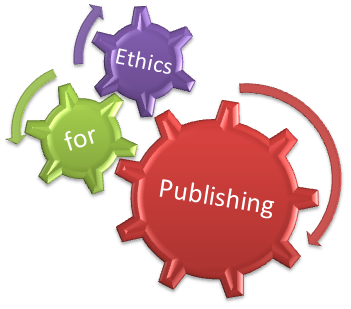A Thermodynamic Model of an Industrial Cooling Tower Using Semi Physical Models
(*) Corresponding author
DOI: https://doi.org/10.15866/iremos.v14i5.19607
Abstract
Mathematical algorithms are powerful tools frequently applied in the solution of energy transfer systems studied in science and engineering in order to improve the energy production systems, purpose responsible alternatives for non-conventional energy generation, and minimize the production costs influenced by the system functionality thermodynamically designed. This numerical approach allows modelling and predicting the thermodynamic states and the system instabilities by means of the application of computational tools. Compared with experimental assessments, numerical methods may be used to solve the mass and energy balances that describe the performance of the mechanical components under different working conditions with inexpensive resources. However, the predictability reached in the data approximation depends on the quality of the numerical data acquired with experimental measurements. In this sense, a novel implementation of thermodynamic principles has been described in order to solve the mass and energy balances for different mechanical components coupled to the industrial cooling tower system considering different non-stationary conditions. A set of physical data has been computed for each particular thermodynamic state by means of a Phenomenological – Based Semiphysical Model maintaining the real operating behavior in a virtual environment. Each thermodynamic state has been estimated with the density and viscosity values of the working flow, which have been influenced by the drop pressure and mass flow rate. A good agreement has been reached in the thermodynamic process representation comparing numerical data with the thermodynamic behavior of the cooling tower. On the other hand, the numerical simulation results with the Simulink application have shown a linear system behavior equal to the non-linear system close to the operating point for different working conditions.
Copyright © 2021 Praise Worthy Prize - All rights reserved.
Keywords
References
G. Valencia, J. Duarte, and C. Isaza-Roldan, Thermoeconomic analysis of different exhaust waste-heat recovery systems for natural gas engine based on ORC, Applied Sciences, vol. 9, no. 19, p. 4017, 2019.
https://doi.org/10.3390/app9194017
Orozco, T., Herrera, M., Duarte Forero, J., CFD Study of Heat Exchangers Applied in Brayton Cycles: a Case Study in Supercritical Condition Using Carbon Dioxide as Working Fluid, (2019) International Review on Modelling and Simulations (IREMOS), 12 (2), pp. 72-82.
https://doi.org/10.15866/iremos.v12i2.17221
Duarte Forero, J., Lopez Taborda, L., Bula Silvera, A., Characterization of the Performance of Centrifugal Pumps Powered by a Diesel Engine in Dredging Applications, (2019) International Review of Mechanical Engineering (IREME), 13 (1), pp. 11-20.
https://doi.org/10.15866/ireme.v13i1.16690
A. Zargoushi, F. Talebi, and S. H. Hosseini, CFD modeling of industrial cold box with plate-fin heat exchanger: Focusing on phase change phenomenon, International Journal of Heat and Mass Transfer, vol. 147, p. 118936, 2020.
https://doi.org/10.1016/j.ijheatmasstransfer.2019.118936
O. Temel and J. van Beeck, Two-equation eddy viscosity models based on the Monin-Obukhov similarity theory, Applied Mathematical Modelling, vol. 42, pp. 1-16, 2017.
https://doi.org/10.1016/j.apm.2016.09.024
C. Haringa, R. Vandewijer, and R. F. Mudde, Inter-compartment interaction in multi-impeller mixing: Part I. Experiments and multiple reference frame CFD, Chemical Engineering Research and Design, vol. 136, pp. 870-885, 2018.
https://doi.org/10.1016/j.cherd.2018.06.005
L. Casadei, L. Könözsy, and N. J. Lawson, Unsteady Detached-Eddy Simulation (DES) of the Jetstream 31 aircraft in One Engine Inoperative (OEI) condition with propeller modelling, Aerospace Science and Technology, vol. 91, pp. 287-300, 2019.
https://doi.org/10.1016/j.ast.2019.05.034
H. Cheung and S. Wang, A comparison of the effect of empirical and physical modeling approaches to extrapolation capability of compressor models by uncertainty analysis : A case study with common semi-empirical compressor mass flow rate models Comparaison, International Journal of Refrigeration, vol. 86, pp. 331-343, 2018.
https://doi.org/10.1016/j.ijrefrig.2017.11.020
D. Zhang and Z. Li, The metamagnetic transition behavior of DyCo2 predicted by a phenomenological thermodynamic model, Journal of Magnetism and Magnetic Materials, vol. 474, pp. 46-50, 2019.
https://doi.org/10.1016/j.jmmm.2018.10.140
C. Zuluaga-bedoya, M. Ruiz-botero, M. Ospina-alarcón, and J. Garcia-tirado, A dynamical model of an aeration plant for wastewater treatment using a phenomenological based semi-physical modeling methodology, Computers & Chemical Engineering, vol. 117, pp. 420-432, 2018.
https://doi.org/10.1016/j.compchemeng.2018.07.008
X. Tauzia, H. Karaky, and A. Maiboom, Evaluation of a semi-physical model to predict NOx and soot emissions of a CI automotive engine under warm-up like conditions, Applied Thermal Engineering, vol. 137, no. March, pp. 521-531, 2018.
https://doi.org/10.1016/j.applthermaleng.2018.04.005
Z. Chao, S. Shi, H. Gao, J. Luo, and H. Wang, A gray-box performance model for Apache Spark, Future Generation Computer Systems, vol. 89, pp. 58-67, 2018.
https://doi.org/10.1016/j.future.2018.06.032
P. Sawant, A. Bürger, M. D. Doan, C. Felsmann, and J. Pfafferott, Development and experimental evaluation of grey-box models of a microscale polygeneration system for application in optimal control, Energy and Buildings, vol. 215, p. 109725, 2020.
https://doi.org/10.1016/j.enbuild.2019.109725
W. Xiong and J. Wang, A semi-physical static model for optimizing power consumption of HVAC systems, Control Engineering Practice, vol. 96, p. 104312, 2020.
https://doi.org/10.1016/j.conengprac.2020.104312
A. Behfar and D. Yuill, Evaluation of gray box thermostatic expansion valve mass flow models, International Journal of Refrigeration, vol. 96, pp. 161-168, 2018.
https://doi.org/10.1016/j.ijrefrig.2018.08.008
A. Mehrpanahi, G. Payganeh, and M. Arbabtafti, Dynamic modeling of an industrial gas turbine in loading and unloading conditions using a gray box method, Energy, vol. 120, pp. 1012-1024, 2017.
https://doi.org/10.1016/j.energy.2016.12.012
Z. Nourani, A. Naserbegi, S. Tayyebi, and M. Aghaie, Thermodynamic evaluation of hybrid cooling towers based on ambient temperature, Thermal Science and Engineering Progress, vol. 14, p. 100406, 2019.
https://doi.org/10.1016/j.tsep.2019.100406
De la Hoz, J., Valencia, G., Duarte Forero, J., Reynolds Averaged Navier-Stokes Simulations of the Airflow in a Centrifugal Fan Using OpenFOAM, (2019) International Review on Modelling and Simulations (IREMOS), 12 (4), pp. 230-239.
https://doi.org/10.15866/iremos.v12i4.17802
T. Mukha, S. Rezaeiravesh, and M. Liefvendahl, A library for wall-modelled large-eddy simulation based on OpenFOAM technology, Computer Physics Communications, vol. 239, pp. 204-224, 2019.
https://doi.org/10.1016/j.cpc.2019.01.016
E. Aursand and T. Ytrehus, Comparison of kinetic theory evaporation models for liquid thin-films, International Journal of Multiphase Flow, vol. 116, pp. 67-79, 2019.
https://doi.org/10.1016/j.ijmultiphaseflow.2019.04.007
B. Olcucuoglu and B. H. Saracoglu, A preliminary heat transfer analysis of pulse detonation engines, Transportation Research Procedia, vol. 29, pp. 279-288, 2018.
https://doi.org/10.1016/j.trpro.2018.02.025
F. Z. Aklouche, K. Loubar, A. Bentebbiche, S. Awad, and M. Tazerout, Predictive model of the diesel engine operating in dual-fuel mode fuelled with different gaseous fuels, Fuel, vol. 220, no. February, pp. 599-606, 2018.
https://doi.org/10.1016/j.fuel.2018.02.053
A. Uusitalo, A. Ameli, and T. Turunen-Saaresti, Thermodynamic and turbomachinery design analysis of supercritical Brayton cycles for exhaust gas heat recovery, Energy, vol. 167, pp. 60-79, 2019.
https://doi.org/10.1016/j.energy.2018.10.181
Y. Kong, W. Wang, Z. Zuo, L. Yang, X. Du, and Y. Yang, Combined air-cooled condenser layout with in line configured finned tube bundles to improve cooling performance, Applied Thermal Engineering, pp. 505-518, 2019.
https://doi.org/10.1016/j.applthermaleng.2019.03.099
L. Zhao, W. Cui, Y. Zhan, Z. Wang, Y. Liang, and Y. Ge, Optimal structural design searching algorithm for cooling towers based on typical adverse wind load patterns, Thin-Walled Structures, vol. 151, p. 106740, 2020.
https://doi.org/10.1016/j.tws.2020.106740
X. Zhu, W. Xu, W. Wang, X. Shi, G. Chen, and S. Zhao, The Design of a Vapor-Condensing Plume Abatement System and Devices for Mechanical Draft Cooling Towers, Water, vol. 12, no. 4, p. 1013, 2020.
https://doi.org/10.3390/w12041013
J. R. Ortiz-del-Castillo, O. M. Hernández-Calderón, E. Y. Rios-Iribe, M. D. González-Llanes, E. Rubio-Castro, and M. E. Cervantes-Gaxiola, Analytical solution of the governing equations for heat and mass transfer in evaporative cooling process, International Journal of Refrigeration, vol. 111, pp. 178-187, 2020.
https://doi.org/10.1016/j.ijrefrig.2019.11.019
Espinel, E., Rojas, J., Florez Solano, E., Computational Fluid Dynamics Study of NACA 0012 Airfoil Performance with OpenFOAM®, (2021) International Review of Aerospace Engineering (IREASE), 14 (4), pp. 201-210.
https://doi.org/10.15866/irease.v14i4.19348
Espinel, E., Rojas, J., Florez, E., 2D Simulation of Two-Phase Flow for Water Jet Cutting Processes with OpenFOAM®, (2021) International Review on Modelling and Simulations (IREMOS), 14 (4), pp. 301-310.
https://doi.org/10.15866/iremos.v14i4.19332
Refbacks
- There are currently no refbacks.
Please send any question about this web site to info@praiseworthyprize.com
Copyright © 2005-2024 Praise Worthy Prize







